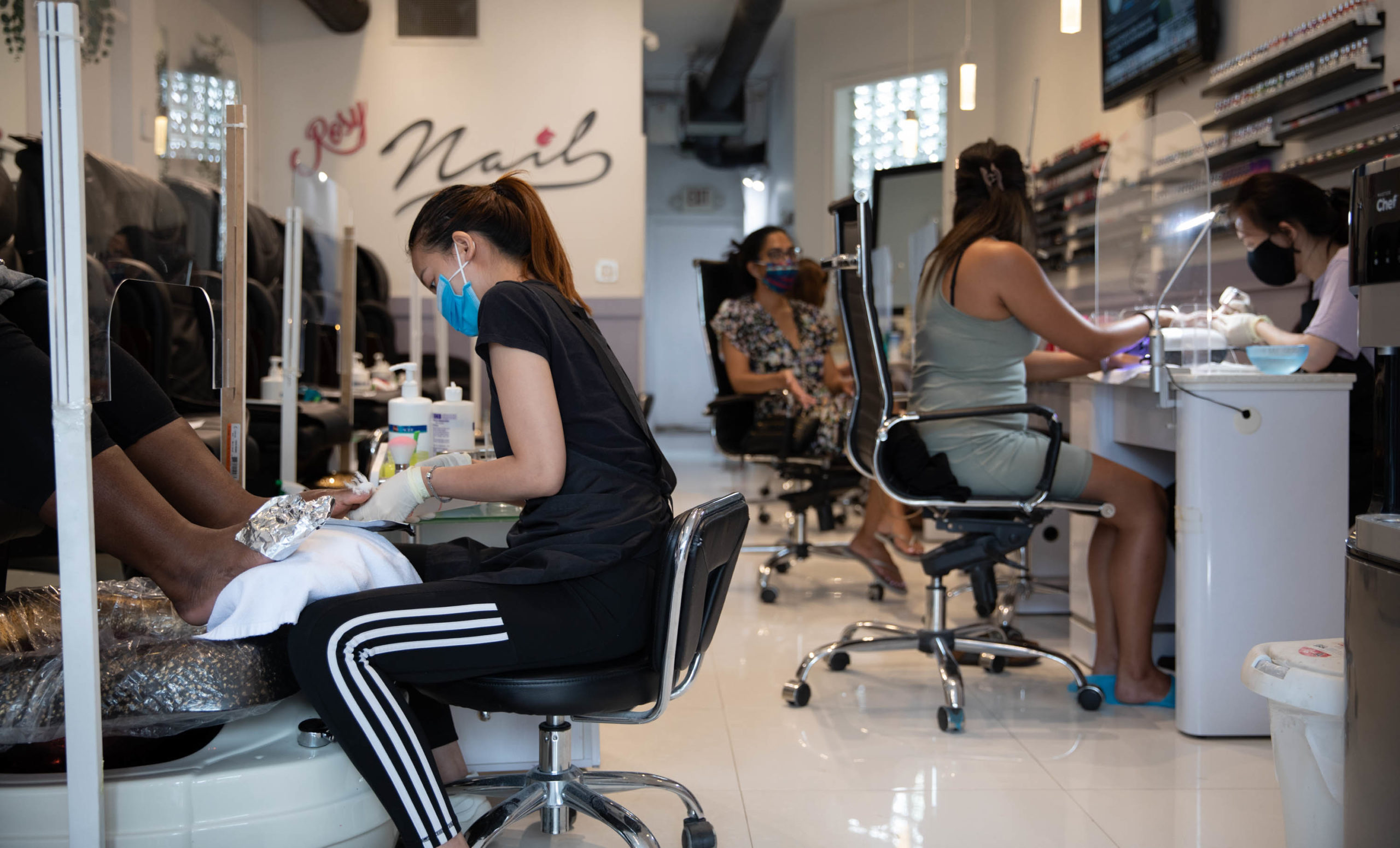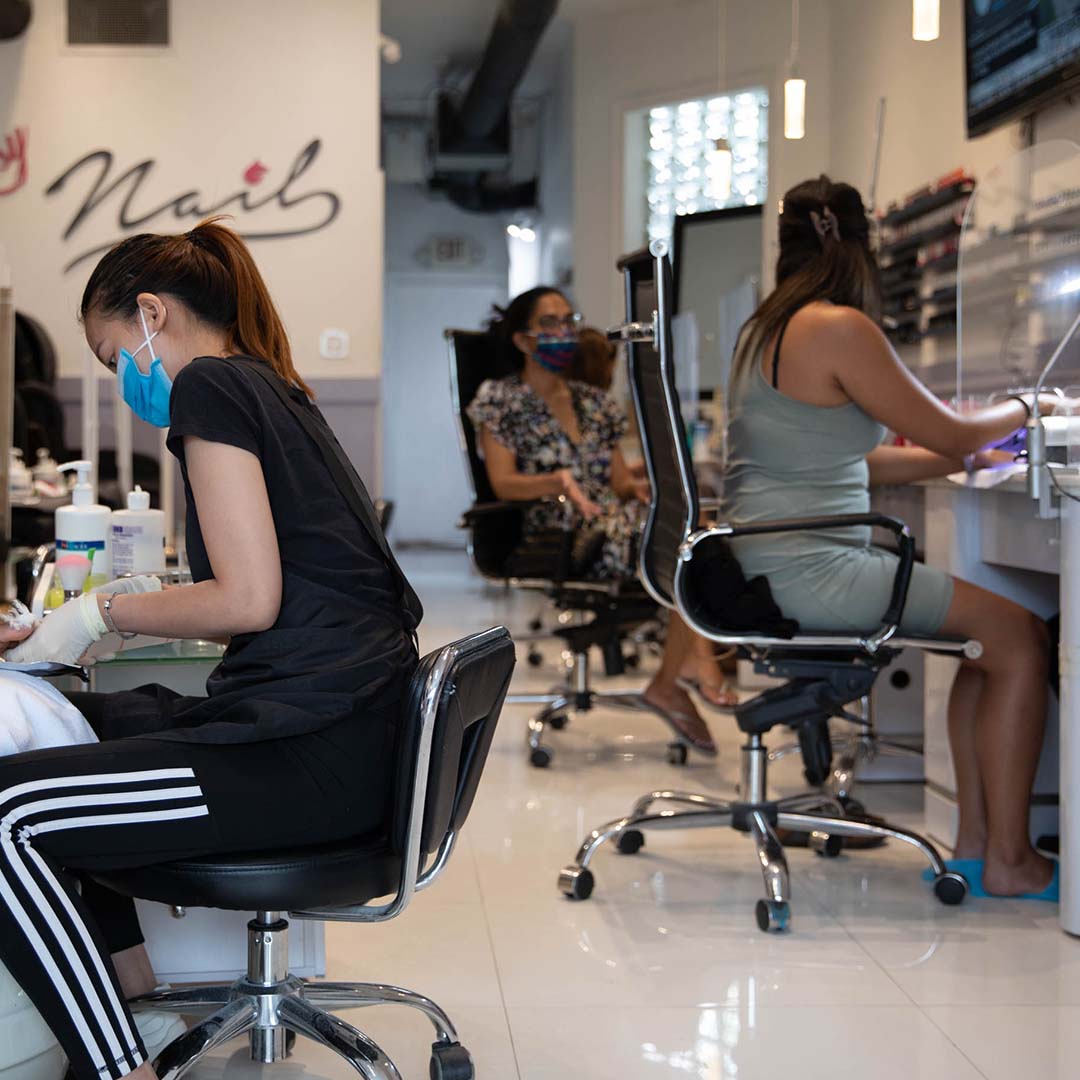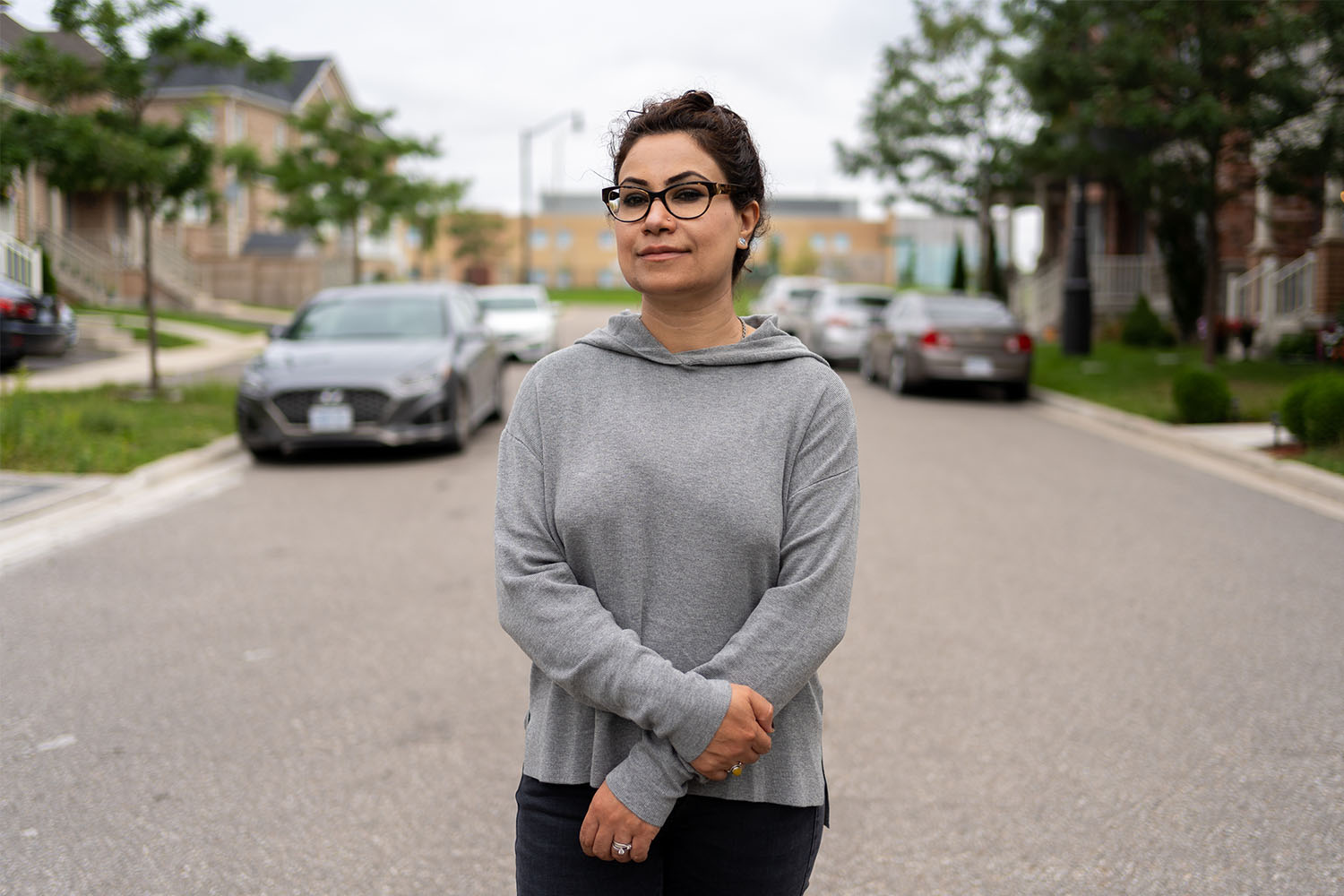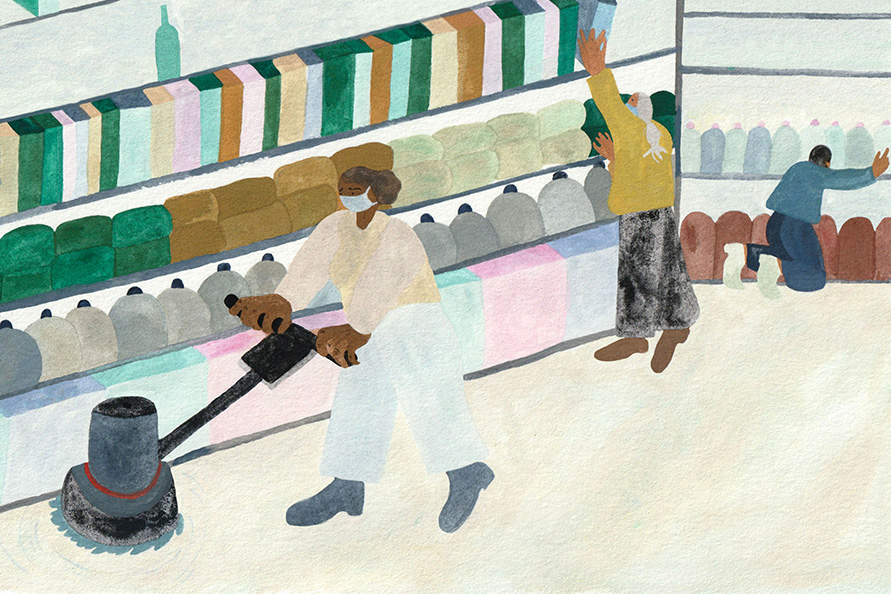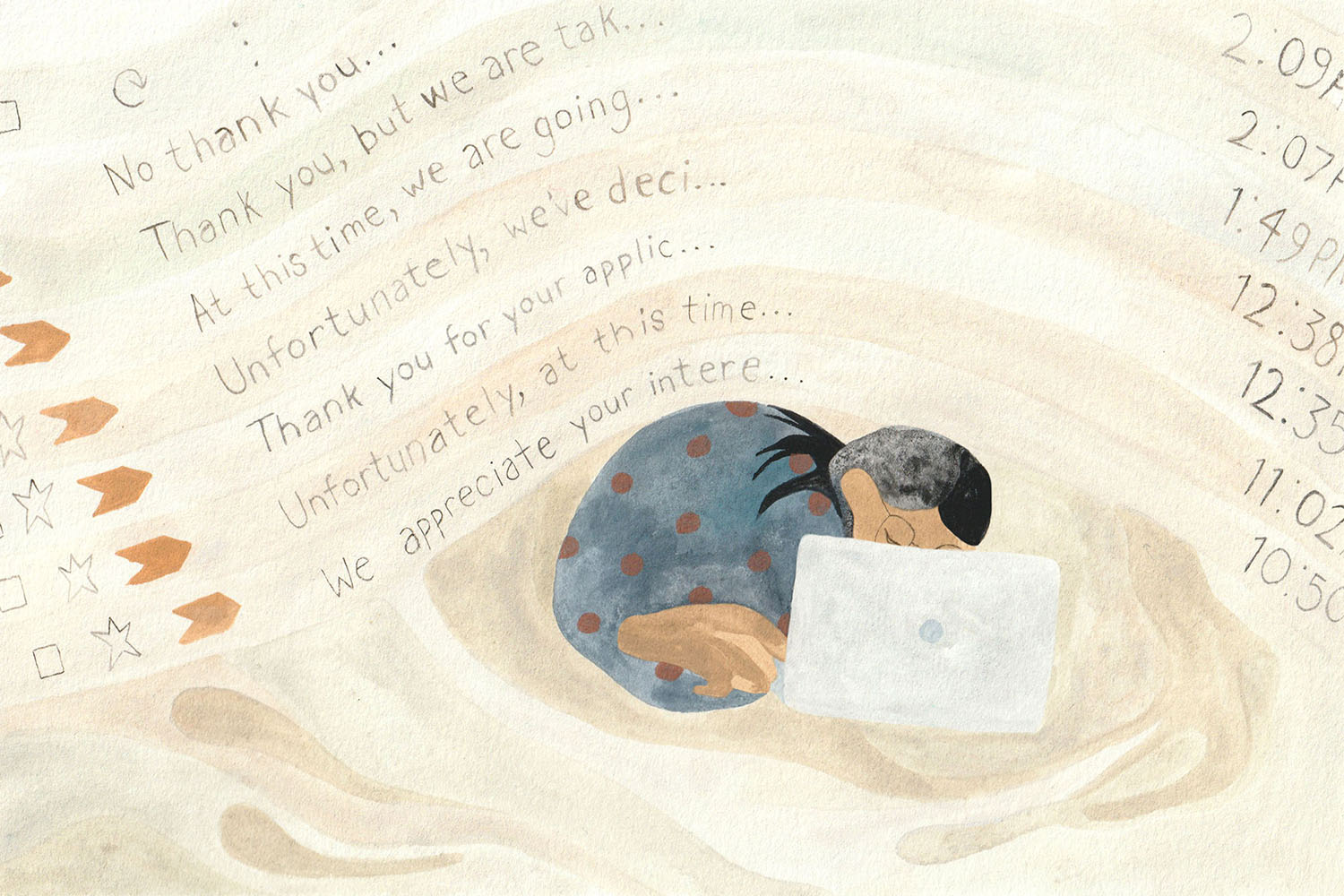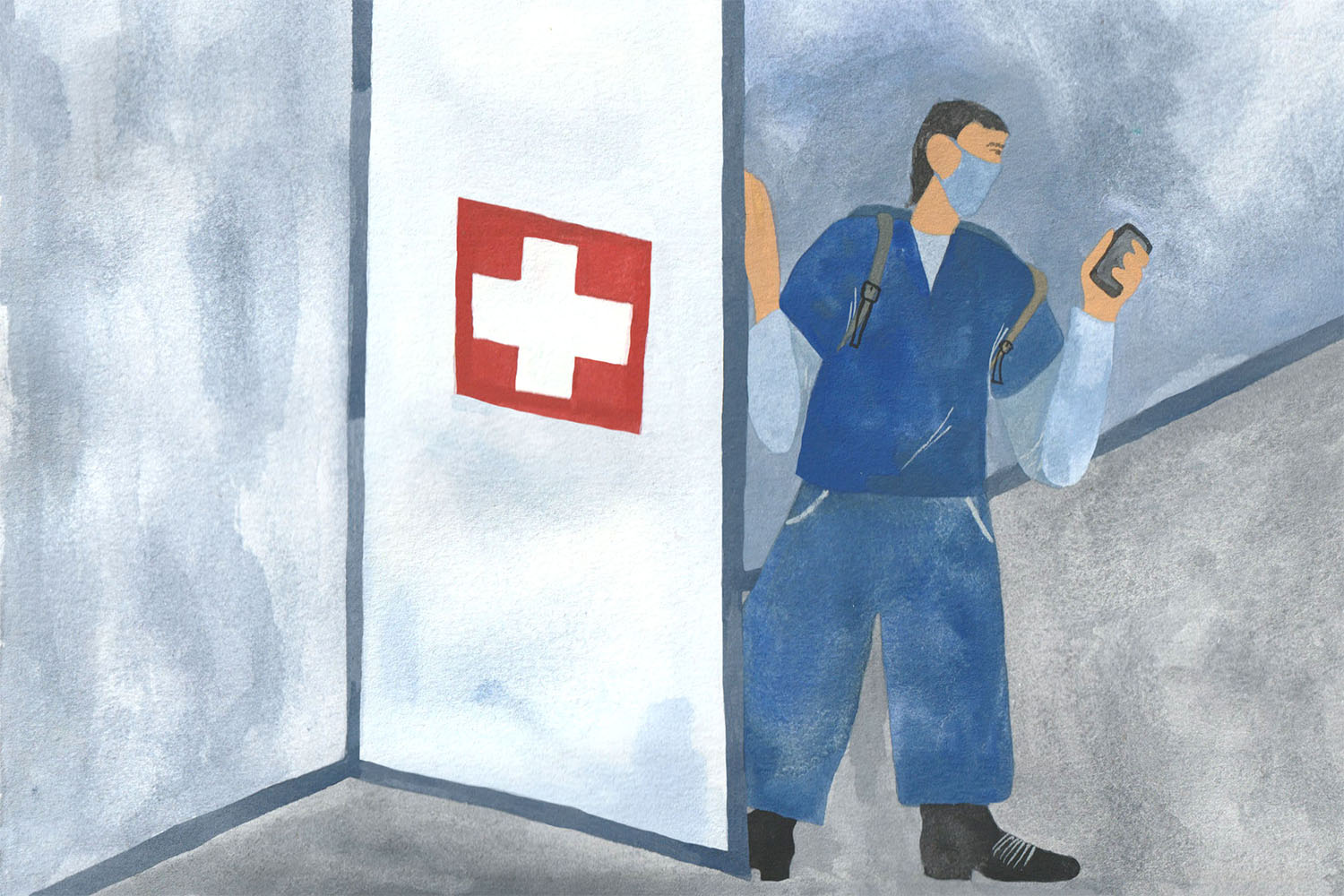In her 12 years as a nail technician, Alice remembers hoping for sunny weather. Working in salons all over Toronto, she would split her commission with the owners she worked for—usually going 50/50, but sometimes being forced to take 30 percent while the salon pocketed the rest. The winter months were often unbearably slow. High season was during the holidays and, especially, during sunny summer days.
In 2009, after years of hopping from salon to salon, Alice landed her ideal job: a salon where her pay was guaranteed, even if she had no clients that day. While the hourly rate was barely over minimum wage, it was steady and she liked her boss. She worked there for ten years, until it was sold in 2019. Then, at the age of 58, Alice found herself back where she started when she first arrived in Toronto from China a decade earlier—working for a share of her commission.
Newcomers like Alice (who is only using her first name for fear of professional reprisal) are the backbone of Toronto’s ubiquitous nail salons. Most are considered self-employed by the salons, but not by choice. It means that they get a cut of the earnings, but no benefits, job security, or a T4. With limited Canadian work experience and English, it also means a massive power imbalance that has made many salon techs silent victims of labour exploitation.
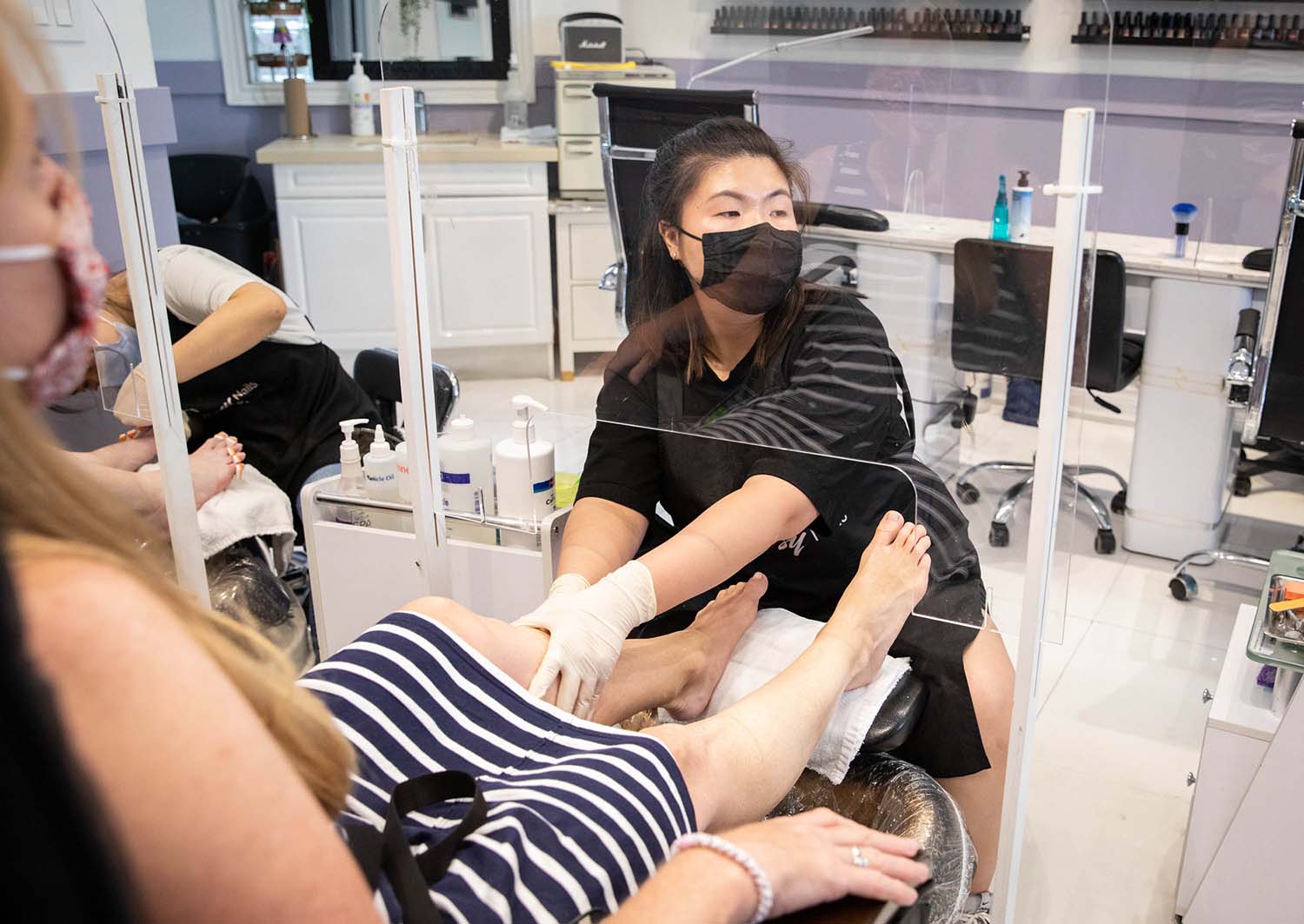
Alice first moved to Toronto from China with her husband and son in 2004, hoping for better educational opportunities for their son.
In China, Alice had been an accountant and her husband had worked with computers. When they immigrated, however, her husband wasn’t able to find a job in his field. Alice’s own English wasn’t good enough for an accounting job. Instead, her first two jobs in Canada were in a wood factory and a CD manufacturing facility—strenuous jobs lifting heavy objects all day that left her exhausted every night. In 2006, a friend suggested she find work as a nail tech.
At a salon in a plaza at McCowan and Highway 7, she paid the owners $200 to learn how to do nails, a common practice. After training, she began working, making a commission of 30 percent while the salon kept 70 percent—earning about $3 for every $12 manicure without receiving an hourly wage. If her boss was unhappy, Alice says, she would only give Alice just one client a day, even though she was expected to stay 9-10 hours.
To get to the salon each morning, Alice took multiple buses, transferring from Toronto to Markham. Tips were sparse and it was complicated to split them when one nail technician worked on a client’s manicure and the other worked on a pedicure at the same time. Her boss would take a cut as well. Some days Alice wouldn’t even make enough to cover the $8 bus fares.
Alice left the first salon after three months. But the next nail salon she worked at wasn’t much different.
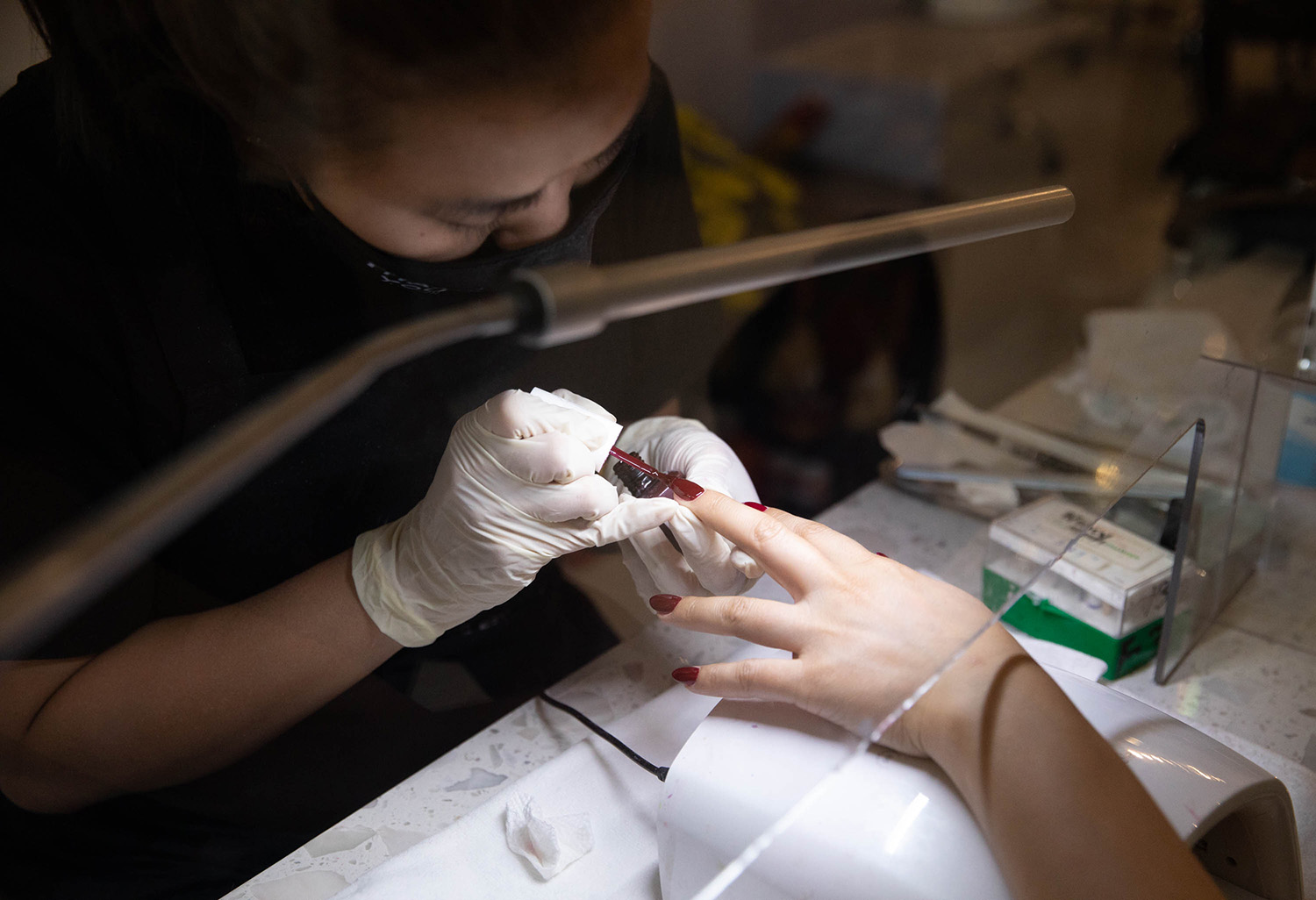
According to data from the government of Canada’s Job Bank, as of December 2019, approximately 9,540 people worked as nail technicians and estheticians in Toronto. There are hundreds of salons around the GTA, ranging from discount to high-end services. And it’s a growing business. Despite being hit hard by the pandemic, according to a report from the market research firm IBISWorld, the hair and nail salon industry in Canada is predicted to grow 3.8 percent to $5 billion in the next five years.
At discount salons, services start at $20 for a manicure or $35 for a manicure and pedicure—a bargain that usually comes at a cost to the workers. At higher-end salons, a manicure can cost over $100.
The Job Bank cites $15 an hour as the average salary for nail technicians in the Toronto area. But in Alice’s experience, most salons in Toronto operate on a 50/50 wage commission model in which the nail technician receives a T4A, meaning they are self-employed contractors with no benefits or sick pay from their employers.
“In the beginning, they don’t pay you,” says Jackie Liang, a former nail tech who is now an outreach worker with the Nail Technician’s Network (NTN), a group formed in 2013 out of Parkdale Queen West Community Health Centre to educate and support nail salon workers. Instead, workers take home tips as they are building up their skills. Eventually, she says, the salon she worked at paid her $60 plus tips for seven-hour days, part-time. She was never guaranteed hours. When there were no clients, she was told to go home.
Many of the workers are paid in cash, says Yiman Ng of NTN. Cash payment is legal, but Ng says many employers don’t provide wage statements. “Usually the employer wants the workers to be self-employed so they don’t have to do any contribution,” she says.
Not having a wage statement can have devastating effects—preventing workers from collecting government support and limiting their ability to sponsor family members who want to come to Canada because they’re unable to demonstrate a certain income level. It also affects workers’ ability to retire, since employers are not paying their share into CPP. For undocumented workers, who are paid under the table, being kept off the books also meant they were unable to access CERB during the lockdown, when all salons were ordered to shut down.
For many immigrant nail techs, working in a city where a language barrier prevents them from finding more stable work, life in Toronto can feel like a trap. But leaving their new country, they say, isn’t a real option.
“We decided to go to another country,” says Liang. “It’s hard to turn back. It’s not an easy decision. You’re already here.”
“A lot of parents sacrifice for their kids,” she adds.
“Once you move to another country, we’re talking about several years, you’re exposed to new things,” says Ng. “Your core values will change. And if you go back, you just don’t feel that you fit in.”
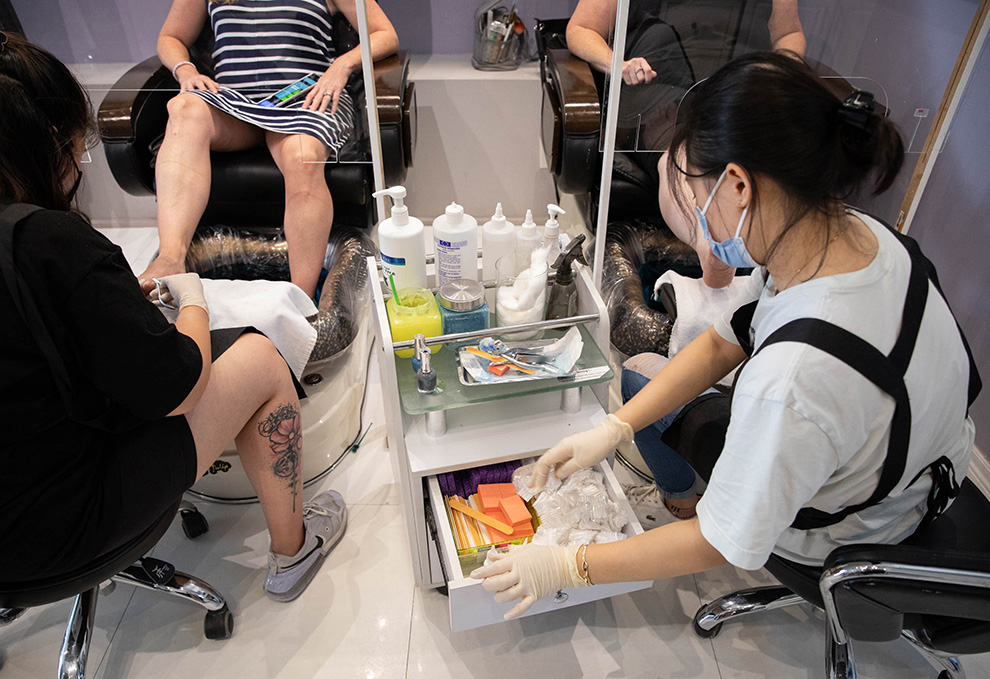
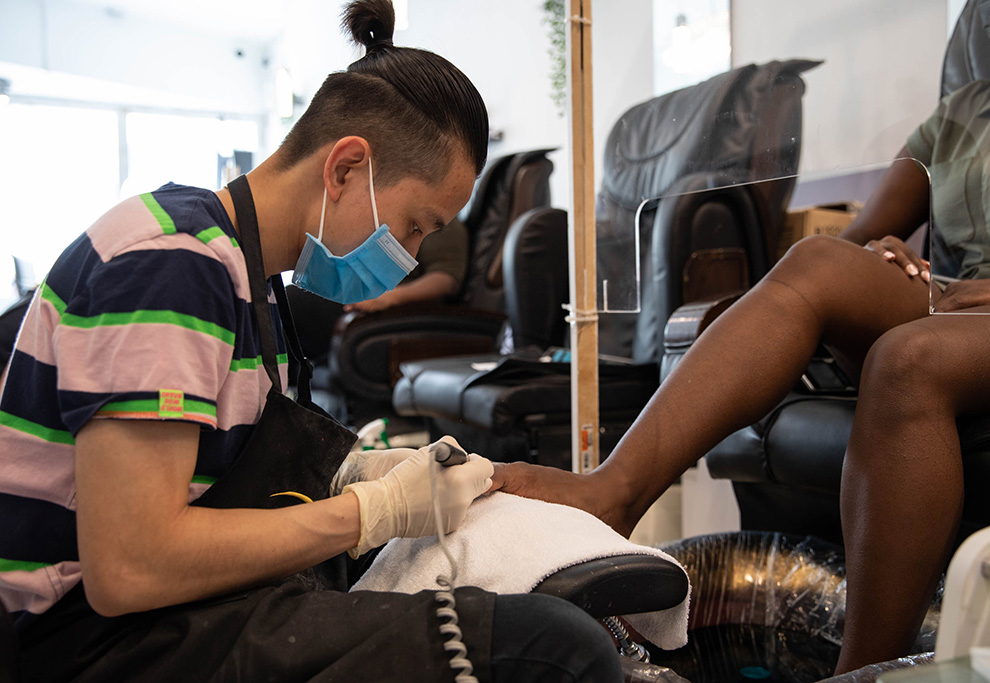

During the pandemic, the nail business was one of the hardest hit industries. Salons were shut down and workers were left scrambling. The Nail Technicians Network asked unemployed technicians to document their lives in lockdown with photos—a way for workers to process their feelings about being out of work and a means to connect with others who were in the same predicament. Some photos showed workers quarantined with their families. Others showed them at work in new professions, in restaurants or on farms.
In Toronto, the salons that survived reopened near the end of June. “It’s going to be very interesting to see how many [workers] return back to the industry,” says Ng.
Many salons closed for good during the pandemic. Customers who couldn’t access salons learned how to do their own nails.
Chris Dinh, 21, who moved to Toronto three years ago with his family, worked at Rosy Nails on the Danforth before the pandemic. During lockdown, on a shopping trip to a nail supply store with his sister, who is also a nail tech, he saw customers buying their own nail supplies. Dinh decided to stop working as a nail technician and now works at the front desk of the salon, speaking with customers with the hope of improving his English enough to one day get work as a barista at Starbucks.
Alice, too, has moved on. She now works for the T&T grocery chain where she prepares food. Working at the store, where she is away from the public, feels safer than working at a salon during the pandemic. And she’s happy to be free of the commission-based model.
She only started her job a few months ago and doesn’t know if she will stay or try to transition back into work at salons again. Fifteen years after arriving, her future feels as uncertain as ever.
Part of her plan, at least, has come true. Her son, now in university, is studying cardiology. “I’m so happy,” she says. “It’s why I came to Canada.”

